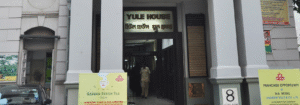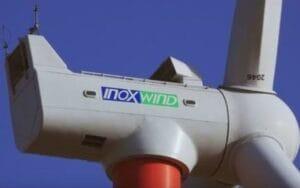1. At a Glance
TARC, the New Delhi–Gurugram luxury real estate developer with more land than cash, just pulled off a ₹154 crore profit in Q1 FY26 after a string of ugly quarters. Sales jumped to ₹1,295 crore (up from ₹76 crore in Q1 FY25), making last year’s numbers look like pocket change. But before we throw a party — debt is high, ROE is deep in the red, and operational margins still have mood swings that make Bollywood plot twists look stable.
2. Introduction
TARC (formerly Anant Raj Global) has been around the Delhi property scene long enough to know that “luxury” sells — if you can survive the regulatory delays, funding crunches, and the occasional court case.
Their strategy is simple in theory:
- Hoard prime land parcels in Delhi NCR.
- Launch high-margin residential projects.
- Sprinkle in some commercial, retail, and hospitality assets for diversification.
In practice, it’s been more like:
- Sit on a huge land bank.
- Watch sales and profits do a rollercoaster act.
- Battle ballooning debt while promising “strong cash inflows” in investor calls.
Still, Q1 FY26 looks like a turnaround quarter — helped massively by project approvals and revenue recognition from large sales. Whether this is a blip or a trend is the billion-rupee question.
3. Business Model (WTF Do They Even Do?)
TARC makes money (or tries to) by:
- Luxury Residential Projects:Core focus — think high-rise apartments in Delhi and Gurugram aimed at the “₹5 crore and above” buyer club.
- Commercial Developments:Office spaces in NCR.
- Hospitality & Retail:Smaller part of the mix, but helps monetise land holdings.
- Land Bank Monetisation:Occasionally sell parcels to unlock value (and pay lenders).
Revenue recognition is milestone-based — meaning a quarter can
look like a jackpot or a drought depending on when big projects cross completion stages.
4. Financials Overview
Quarterly Snapshot – Consolidated (₹ Cr):
| Metric | Q1 FY26 | Q1 FY25 | Q4 FY25 | YoY % | QoQ % |
|---|---|---|---|---|---|
| Revenue | 1,295 | 76 | 101 | 1,604% | 1,182% |
| EBITDA | -120 | 41 | -240 | -392% | 50% |
| PAT | 154 | 7 | -146 | 2,100%+ | NA |
| EPS (₹) | 1.84 | 0.24 | -4.95 | 667% | NA |
| EPS (Annual) | 7.36 | — | — | — | — |
Commentary:The PAT surge is thanks to other income of ₹219 crore — operationally, they still lost money. This is not a textbook turnaround — more like a one-quarter adrenaline shot.
5. Valuation (Fair Value RANGE only)
Method 1: P/E Method
- Annualised EPS = ₹1.84 × 4 = ₹7.36
- Real estate developer P/E range (mid-cap, inconsistent earnings): 12–18
- FV Range = ₹88 – ₹132
Method 2: P/B Method
- Book Value = ₹35.3
- Sector P/B range for loss-making developers: 1.5–2.5
- FV Range = ₹53 – ₹88
Method 3: NAV-based
- NCR luxury developer NAV typically 2.5–3.5× book value for prime land bank.
- FV Range = ₹88 – ₹124
Educational Disclaimer:This FV range is for educational purposes only and isnotinvestment advice.




















